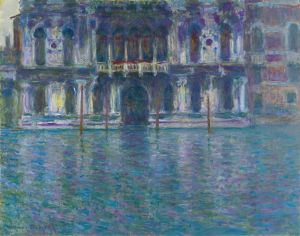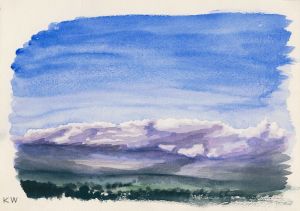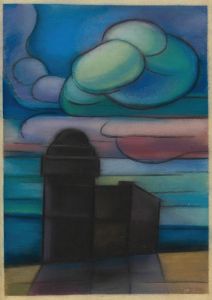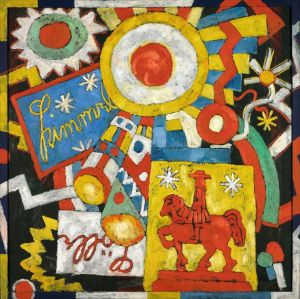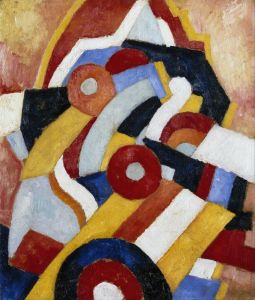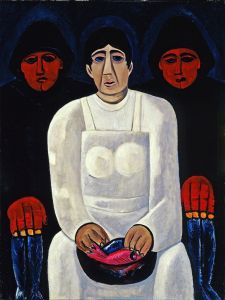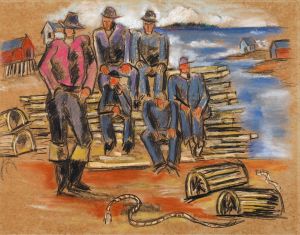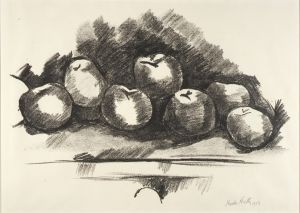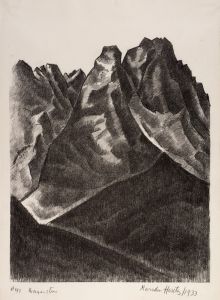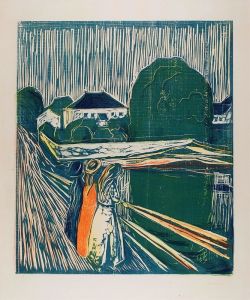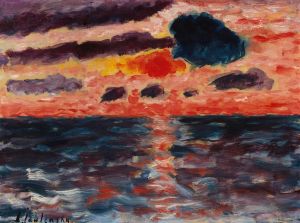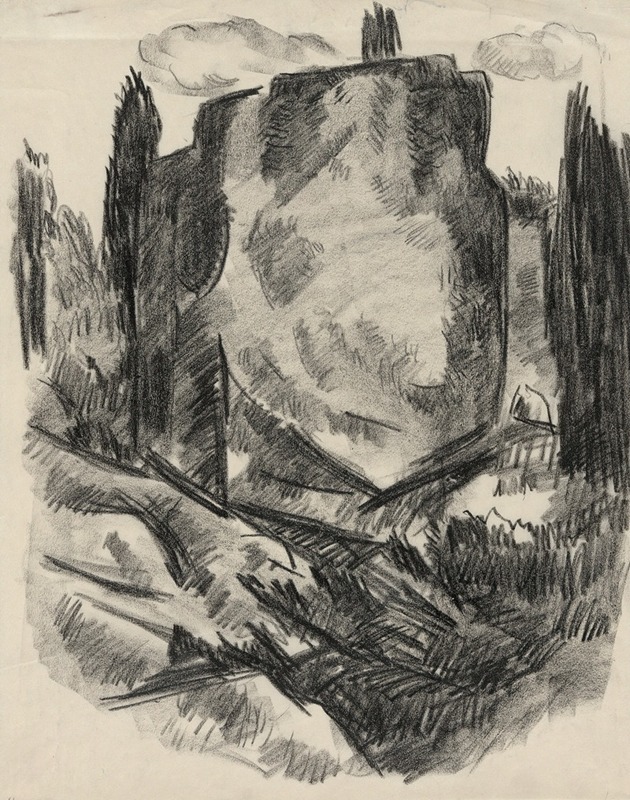
Landscape
A hand-painted replica of Marsden Hartley’s masterpiece Landscape, meticulously crafted by professional artists to capture the true essence of the original. Each piece is created with museum-quality canvas and rare mineral pigments, carefully painted by experienced artists with delicate brushstrokes and rich, layered colors to perfectly recreate the texture of the original artwork. Unlike machine-printed reproductions, this hand-painted version brings the painting to life, infused with the artist’s emotions and skill in every stroke. Whether for personal collection or home decoration, it instantly elevates the artistic atmosphere of any space.
Marsden Hartley, an American Modernist painter, created "Landscape" during a period marked by his exploration of form, color, and abstraction. Hartley, born in 1877 in Lewiston, Maine, was a key figure in the early 20th-century American art scene, known for his bold use of color and innovative compositions. His work often reflected his personal experiences and the various cultural influences he encountered throughout his life.
"Landscape" is one of Hartley's many works that exemplifies his interest in capturing the essence of a scene rather than its literal appearance. Hartley was deeply influenced by his travels and the landscapes he encountered, particularly those in Europe and the American Southwest. His exposure to European modernist movements, including German Expressionism and French Fauvism, played a significant role in shaping his artistic style.
In "Landscape," Hartley employs a vibrant color palette and dynamic forms to convey the emotional and spiritual qualities of the natural world. His approach to landscape painting was not to replicate the scene but to express its underlying spirit and energy. This method aligns with the broader modernist movement, which sought to break away from traditional representational art and explore new ways of seeing and interpreting the world.
Hartley's landscapes often feature bold, simplified shapes and a strong sense of rhythm, reflecting his interest in the symbolic and the abstract. He was known for his ability to distill complex scenes into their essential elements, using color and form to evoke a sense of place and mood. This abstraction in his landscapes can be seen as a reflection of his personal quest for meaning and his desire to connect with the deeper forces of nature.
Throughout his career, Hartley was also influenced by his connections with other artists and intellectuals. He spent time in New York, where he was associated with the avant-garde circle around Alfred Stieglitz, a prominent photographer and art promoter. Stieglitz's gallery, 291, was instrumental in introducing Hartley to the works of European modernists and fostering his development as an artist.
"Landscape" is a testament to Hartley's ability to synthesize these diverse influences into a unique artistic vision. His landscapes are not merely depictions of physical locations but are imbued with a sense of personal and emotional resonance. Hartley's work continues to be celebrated for its innovative approach and its contribution to the development of American modernism.
Marsden Hartley's "Landscape" remains an important piece within his oeuvre, illustrating his mastery of color and form and his commitment to exploring the expressive potential of art. His landscapes invite viewers to engage with the natural world in a new and profound way, offering a glimpse into the artist's inner world and his enduring fascination with the beauty and mystery of the landscape.






